East End War Relics: Military Hardware & History on Display
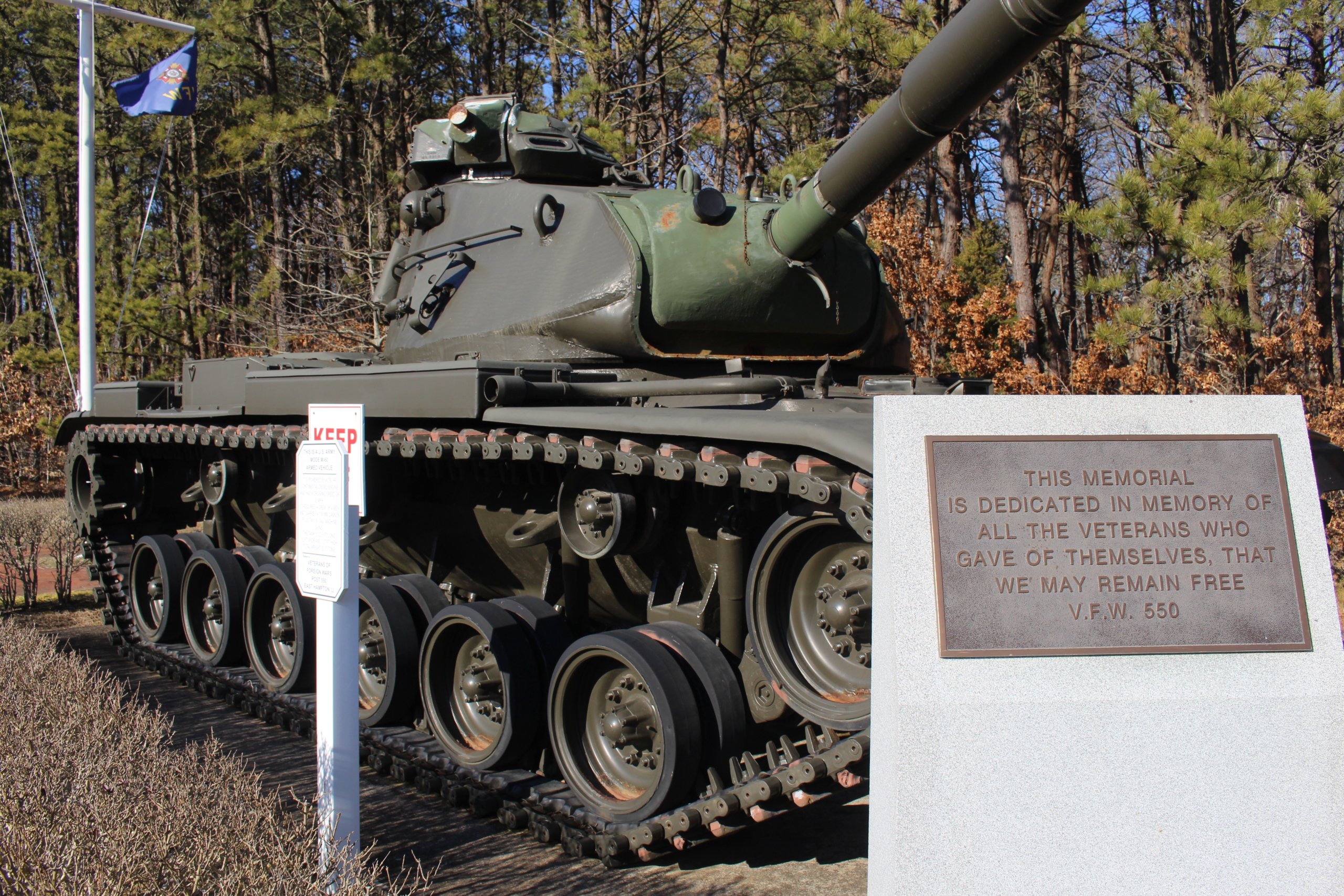
When people think of the Hamptons and North Fork, weapons of war would never be the first thing that comes to mind, but this little section of Long Island is more connected to the military than one might imagine.
First, of course, is the Francis S. Gabreski Air National Guard Base in Westhampton Beach, and that’s not all. Montauk is home to an array of decommissioned coastal defense fortifications, including Camp Hero; Grumman used to build all kinds of war machines in Calverton; and anyone with a sharp eye will spot numerous other examples of military might along the roads between these towns.
Here, we examine a few of the standouts worth a visit.
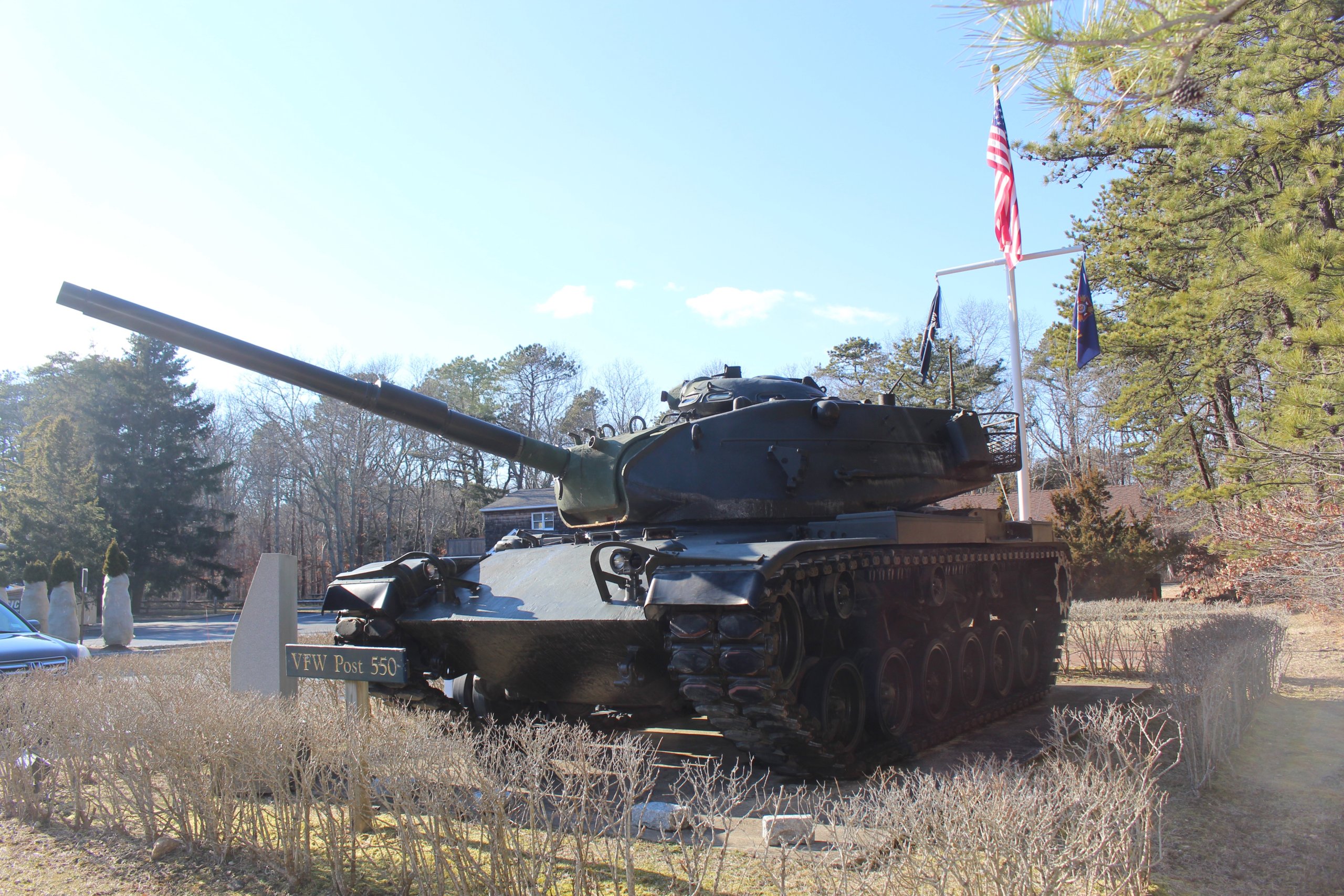
M60 Patton Tank
Located outside the East Hampton VFW Post 550 (and Highway Restaurant & Bar) at 290 Montauk Highway in Wainscott, this U.S. Army Model M60 Main Battle Tank (MBT) — unofficially dubbed a “Patton” tank — served between Vietnam and the 1991 Gulf War. A stone marker at the site carries a plaque honoring “all the veterans who gave of themselves, that we remain free,” while a wooden sign presents details: It is powered by a 750 HP continental diesel engine, has a cruising speed of 30 mph and requires a four-man crew. The tank has a 105 mm cannon and two 50 cal. machine guns, and it weighs 57 tons. These capable war machines combine firepower, armor and mobility to fill nearly all roles on the battlefield.
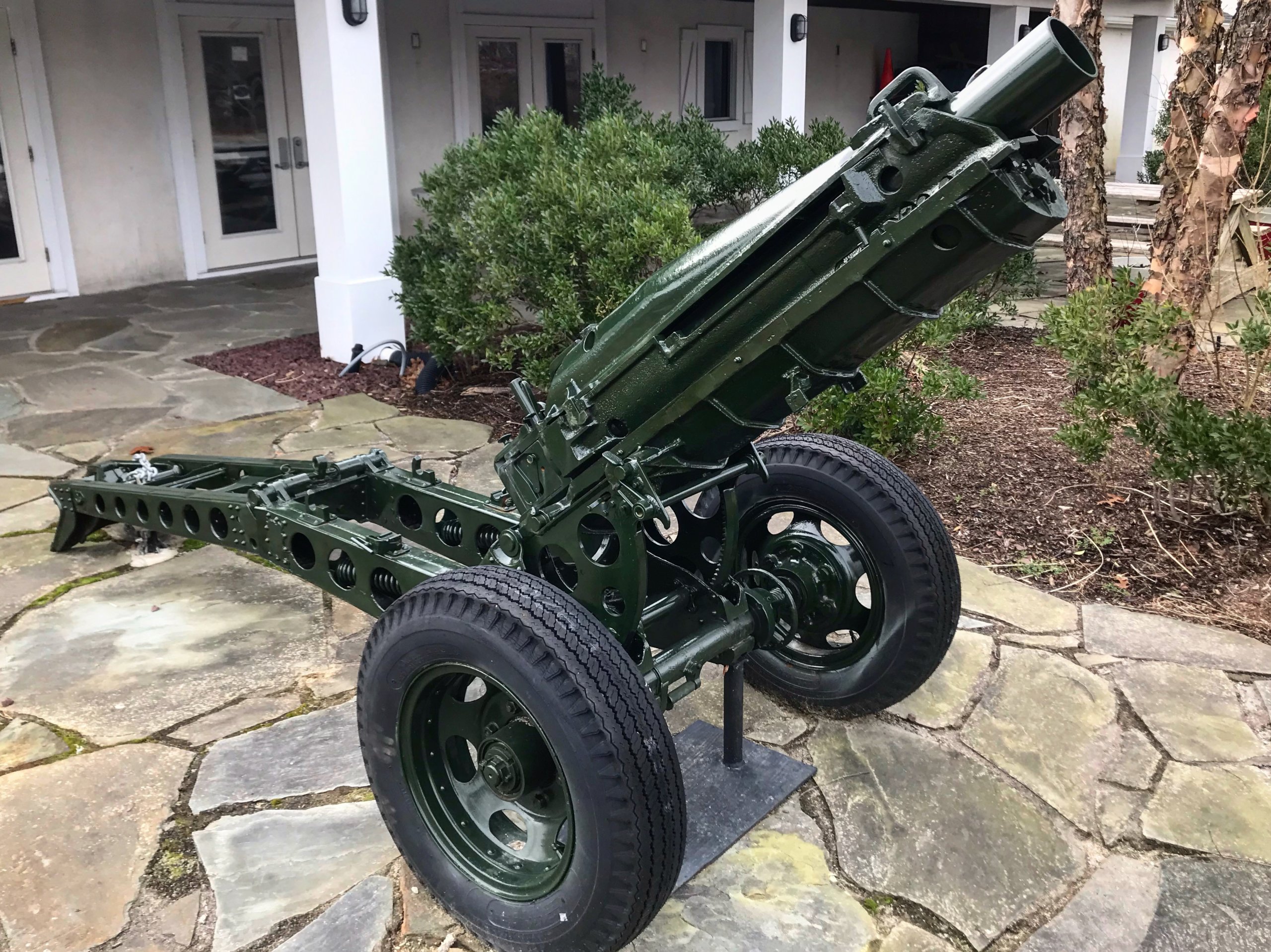
75mm M1A (or M116) Pack Howitzer
This sturdy piece of artillery sits proudly outside the Dayton-Soehlke-Ohlhorst Veterans Memorial VFW Post 5350 at 101 Old Riverhead Road in Westhampton Beach. According to post commander William Hughes, the 75mm M1A Pack Howitzer has been at the post dating back to at least 1960, first at their original Quogue location and then moving with the post to Westhampton Beach nearly seven years ago. These guns, which were developed in 1920 and served in conflicts from World War II to Vietnam, are given the “pack” designation because they could be disassembled and placed on a pack animal for easy transport across difficult terrain. They could also be towed and were typically deployed with airborne and mountain divisions. A member at Post 5350 recently refurbished this real, but non-firing, piece of history.
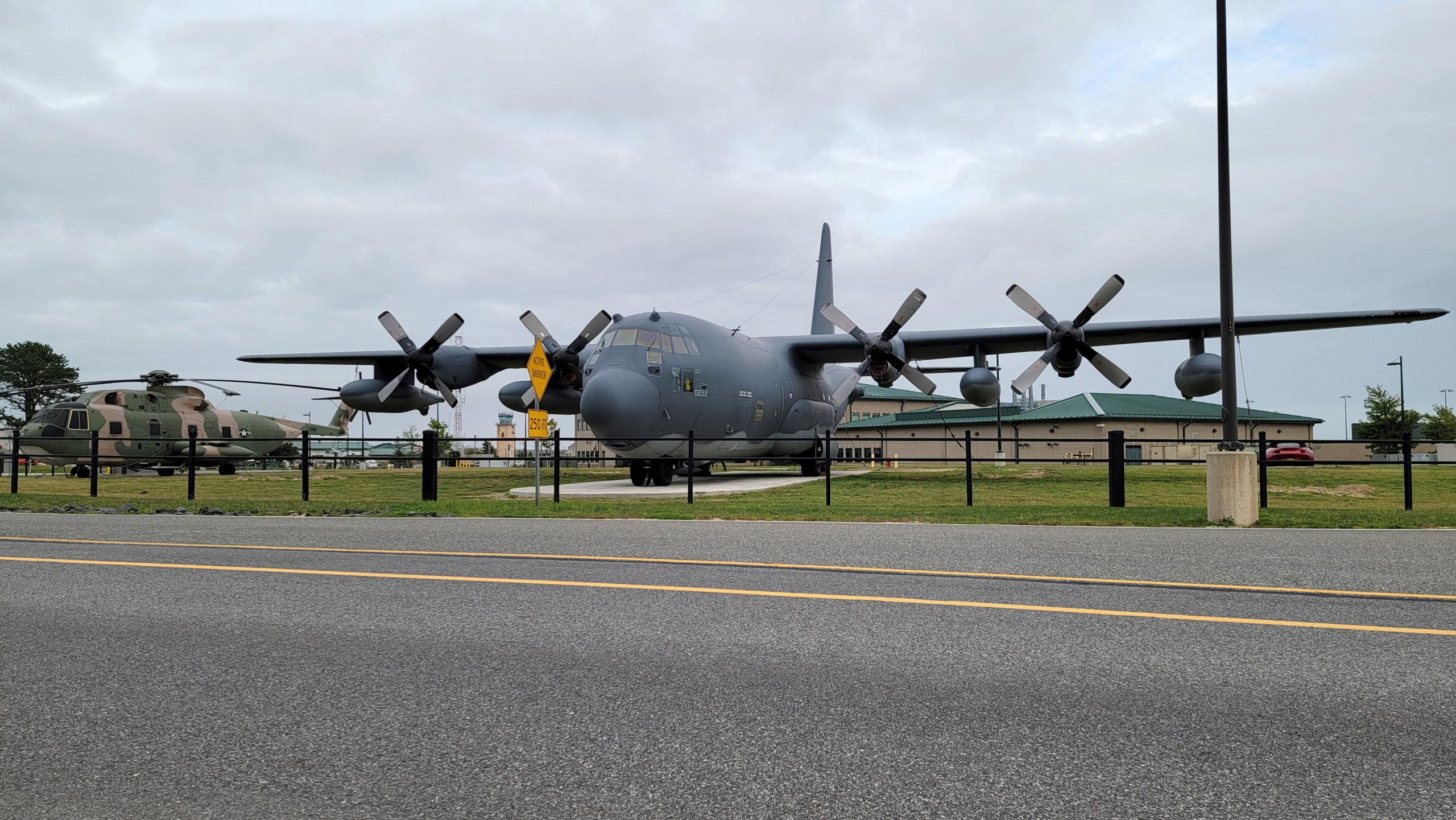
HC-130 Hercules Aircraft and HH-3E Helicopter
Two powerful examples of U.S. air power stand in front of the Francis S. Gabreski Air National Guard Base at 150 Old Riverhead Road in Westhampton Beach. Civilians absolutely cannot get too close, but the massive Lockheed HC-130 Hercules search and rescue aircraft — or “Triple Deuce,” named for its 0222 tail number — and Sikorsky HH-3E “Jolly Green Giant” search and rescue helicopter have a strong presence, even from the road. Also known as “The Spirit of Long Island,” the legacy model HC-130, went into service in 1966, flying missions in Vietnam before joining the Westhampton Beach-based NY Air National Guard 106th Rescue Wing until it was decommissioned in 2019. The plane was added as a gate guardian at the base alongside the HH-3E on August 16, 2021.
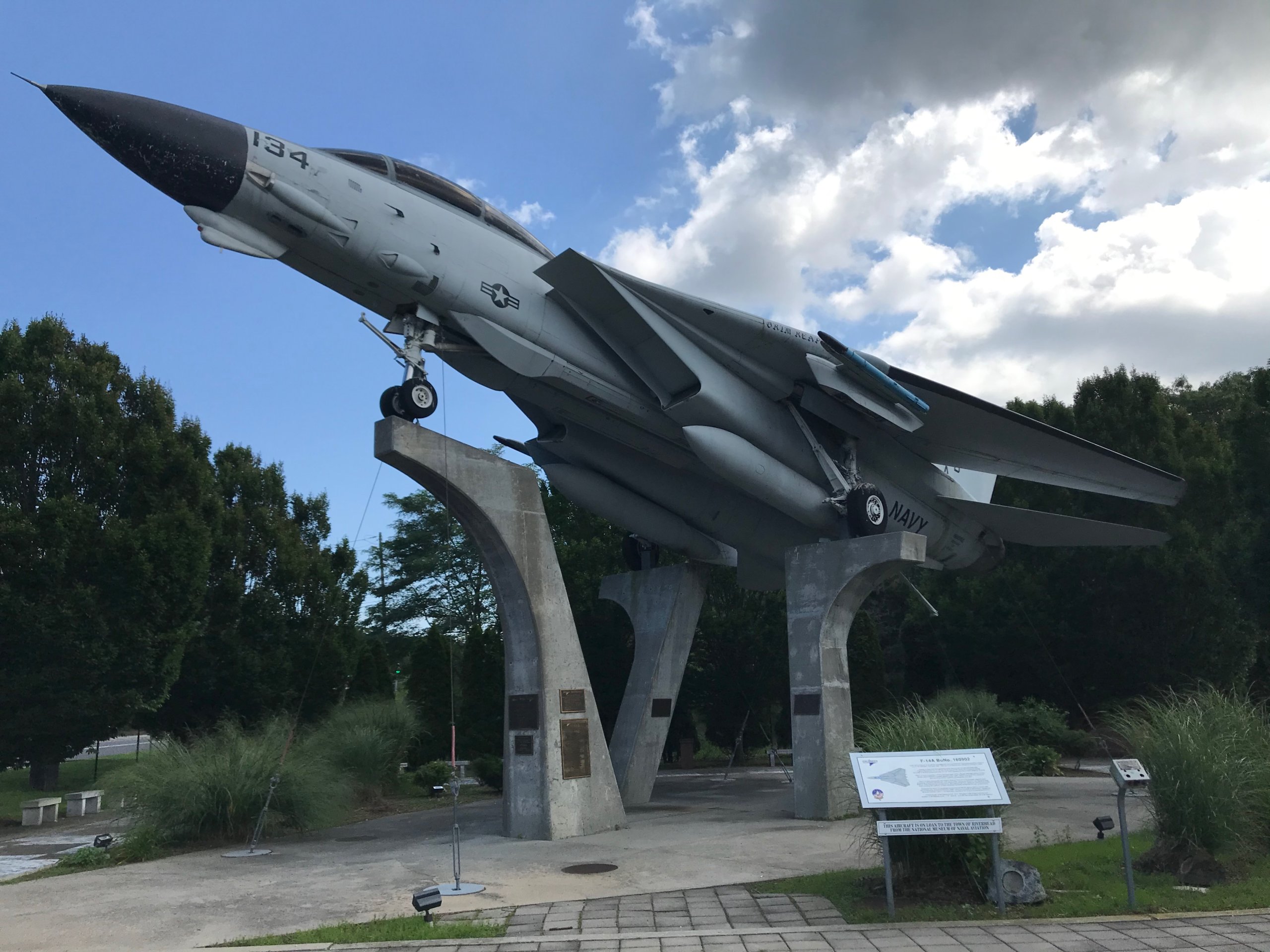
F-14A Tomcat
Just one part of an impressive collection at Grumman Memorial Park in Calverton (4670 NY-25), this F-14A Tomcat served a distinguished career with Fighter Squadrons VF-14, VF-32, VF-41 and VF-84 before ending its service with the VF-101 Grim Reapers, based at NAS Oceana, Virginia — and the fighter still wears the markings from its final assignment. Powered by two turbofan engines, each with 20,900 lbs. of thrust, the plane can reach a speed of Mach-2. For firepower, it had a M61 A1 20mm Vulcan cannon and any combination of AIM-54 Phoenix, AIM-7 Sparrow and AIM-9 Sidewinder missiles for air-to-air combat. The F-14’s wingspan is just over 64 feet and it is nearly 63 feet long. The crew included one pilot and a Radio Intercept Officer (RIO) who operated radar, weapons, communication and camera equipment.
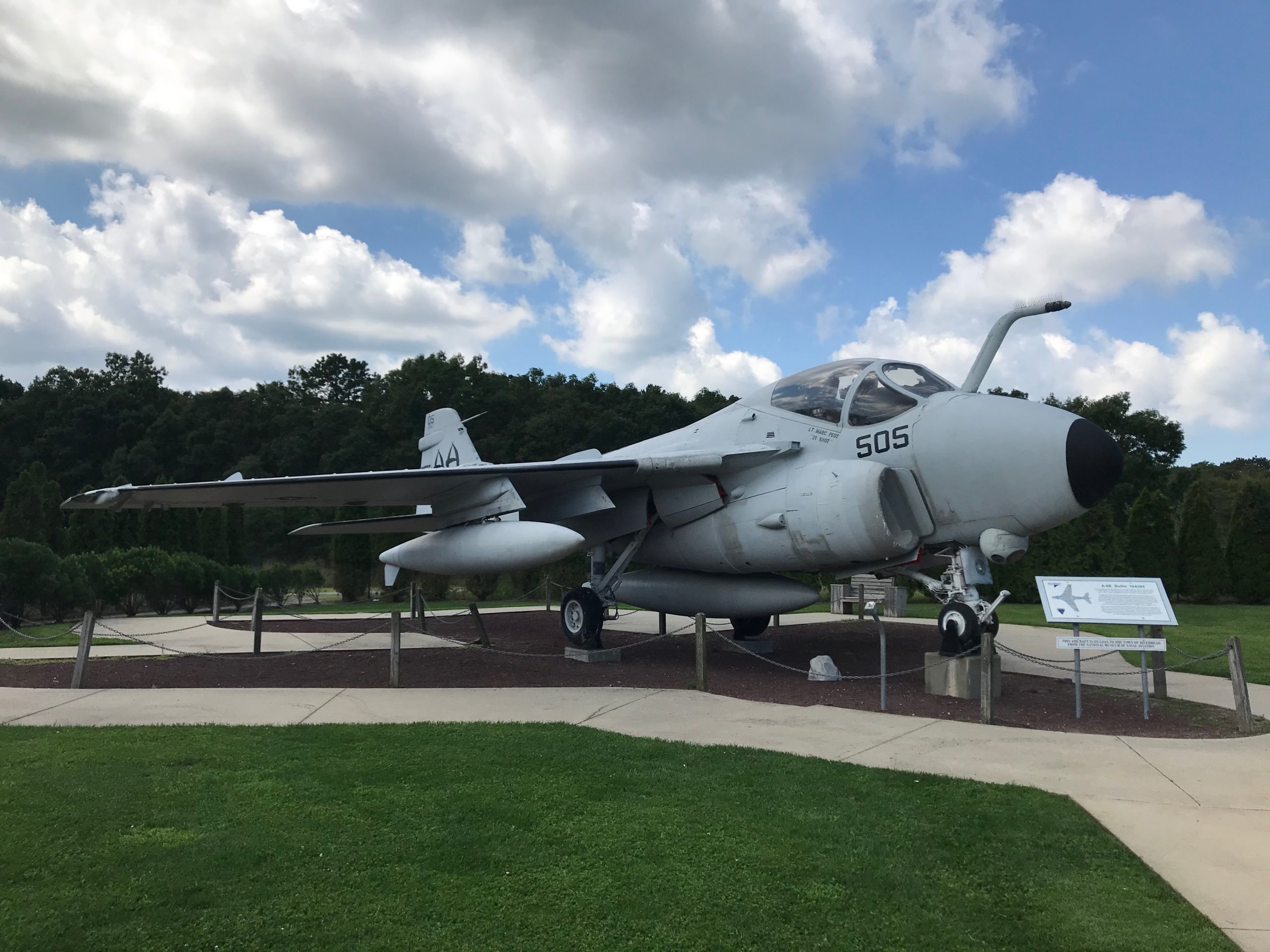
A-6E Intruder
Also in Calverton’s Grumman Memorial Park, this A-6E Intruder is one of only 95 built. These all-weather attack planes, introduced in 1960, were capable of delivering 28 500 lb. bombs with pinpoint accuracy in day or night. They used minimal fuel and were able to fly missions to strike targets as far as 500 miles away from aircraft carriers at sea. The crew included a pilot and a navigator/bombardier, and these planes reached maximum speeds of 648 mph at sea level. It has a 53-foot wingspan and is nearly 55 feet long. The last A6 was retired from action in 1997. This particular plane was brought to the park in 2005 on loan from the National Museum of Naval Aviation.
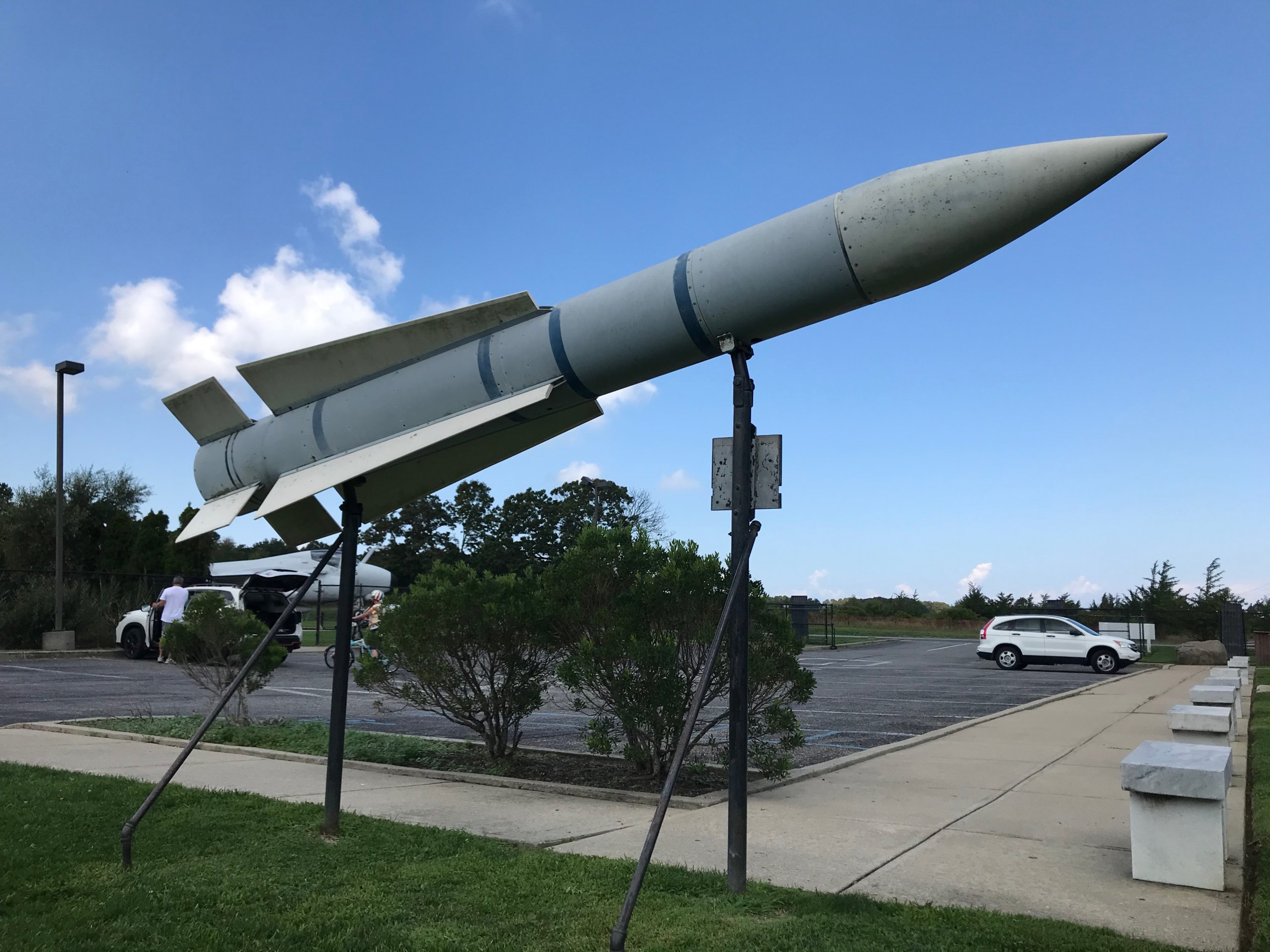
Hughes AIM-54A Phoenix
Another interesting piece of history in Calverton Memorial Park, the Hughes AIM-54A Phoenix long range air-to-air missile was intended for use with F-111B, these ended up as an integral part of the F-14’s arsenal, with as many as six aboard a single plane. It weighs 1,021 lbs and travels at Mach-5 with a 96-mile range. The missile is 13 feet long and has a wingspan of 3 feet, and it had a 132 lb. warhead. The AIM-54 was retired from service in 2004, while F-14s continued to fly until 2006.
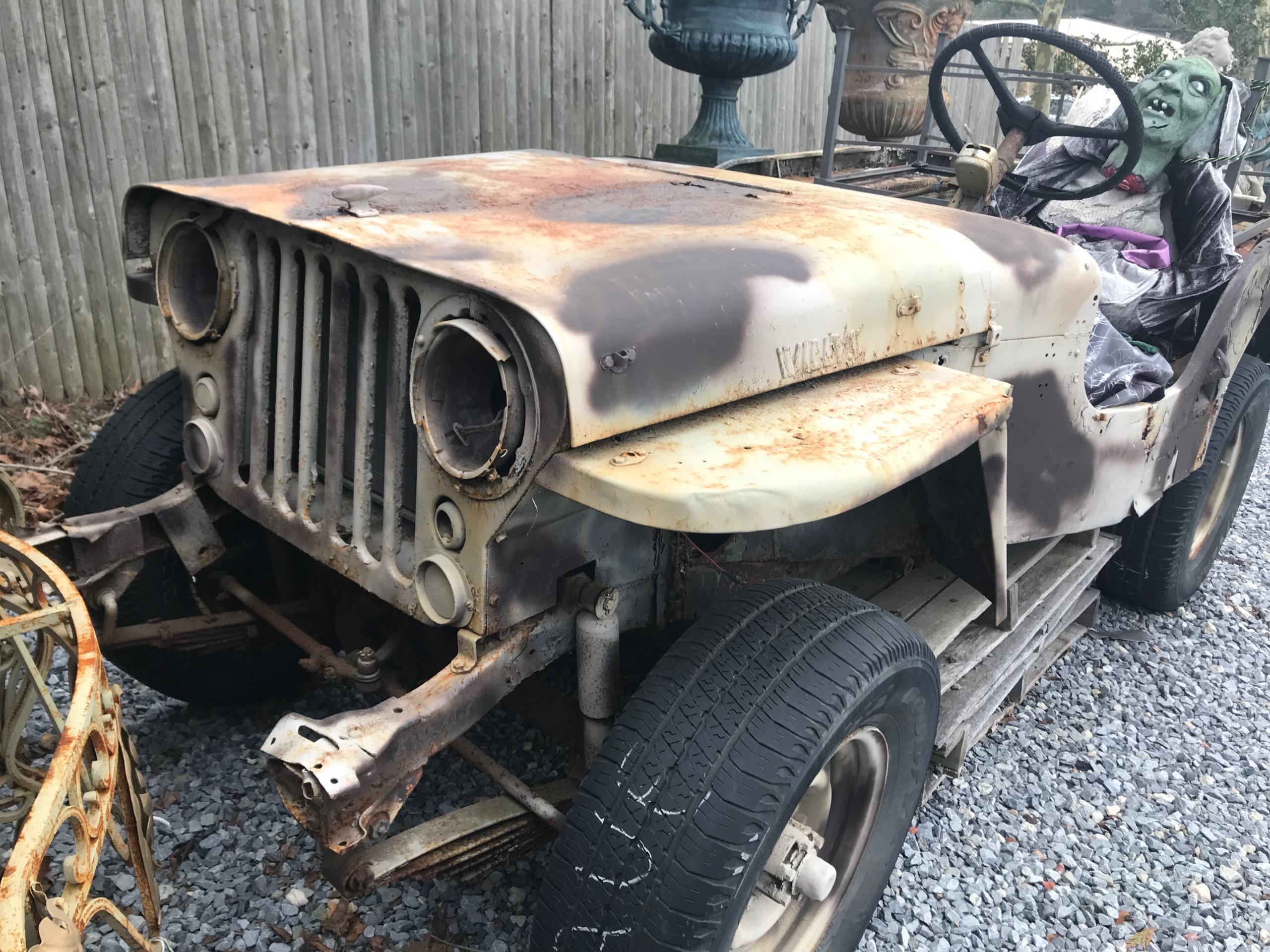
Willys Jeep
A classic vehicle used as the go-to light ground transport in World War II, the Willys Jeep is emblematic of that conflict. This example, parked at Behind the Fence Gallery in Southampton (1547 County Road 39) has seen better days — and it may or may not have a monster behind the wheel at any given time — but gallery owner Jeremy Essay explains that it’s just a parts Jeep for his father’s much nicer version at home. Still, the Willys Jeep is about as American as military transport gets. Despite its lack of guns or ordinance, Supreme Commander of the U.S. military, and later president, Dwight D. Eisenhower named it among the country’s three “decisive weapons” in WWII, and General George Marshall called it “America’s greatest contribution to modern warfare.” It had 4-wheel drive, it was tough and versatile, and the United States made some 650,000 of them to move soldiers and officers around during the war.



